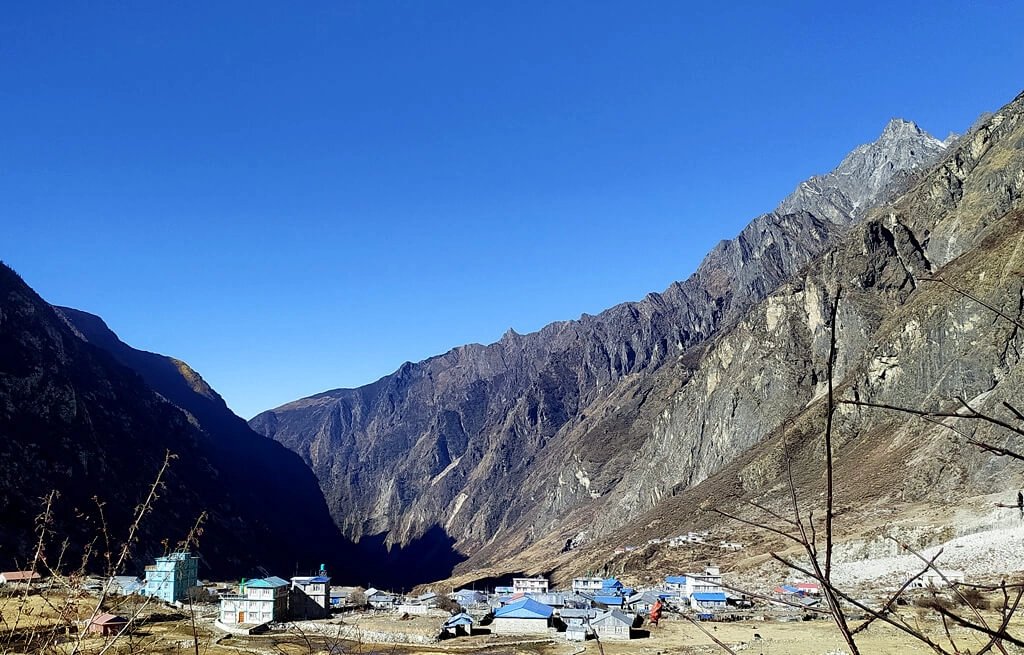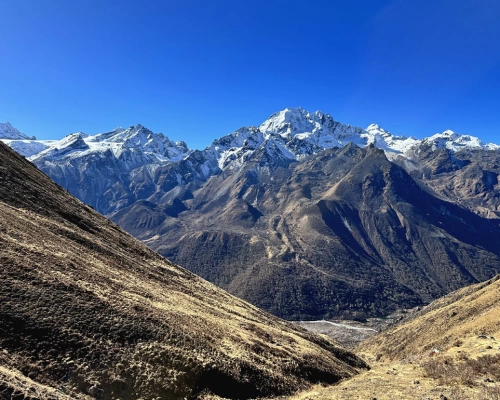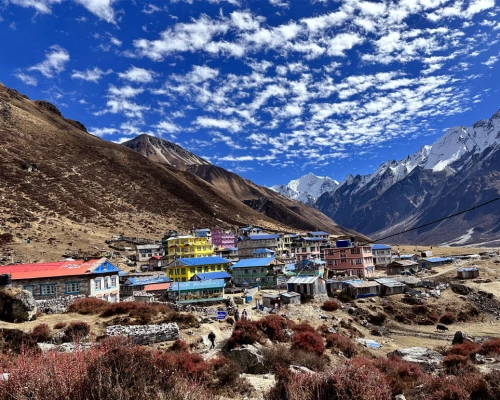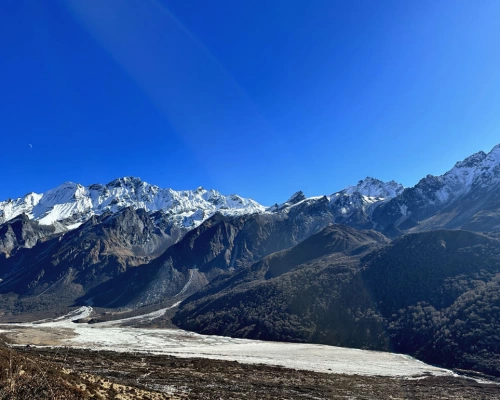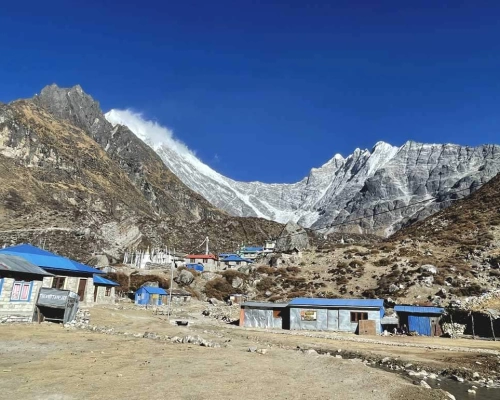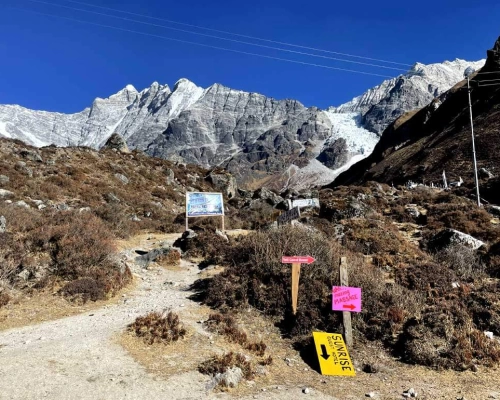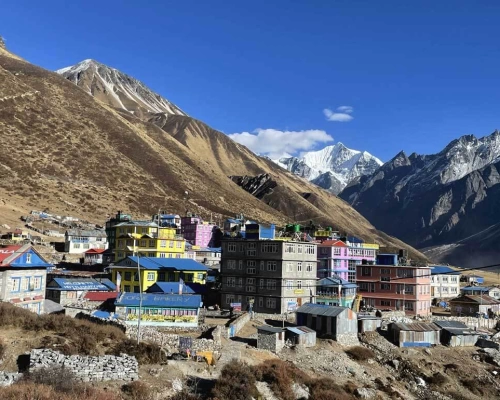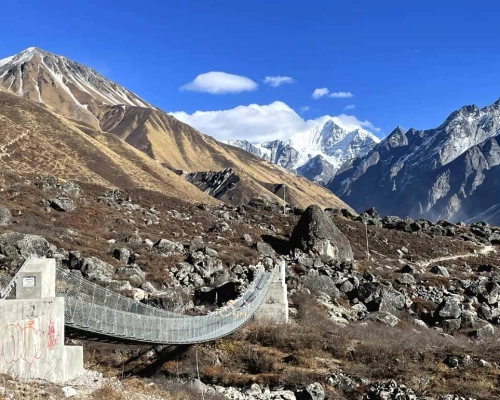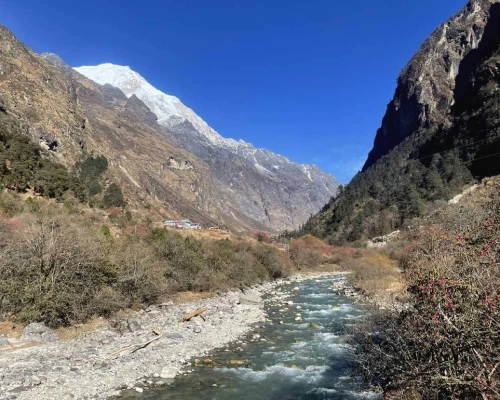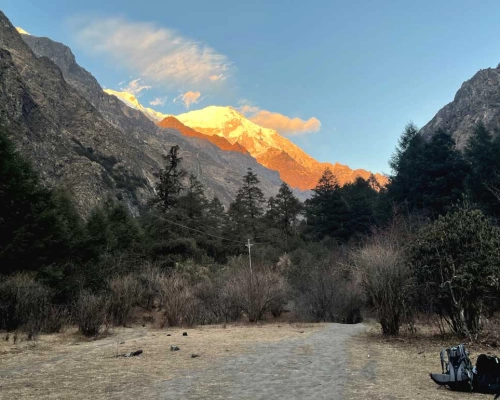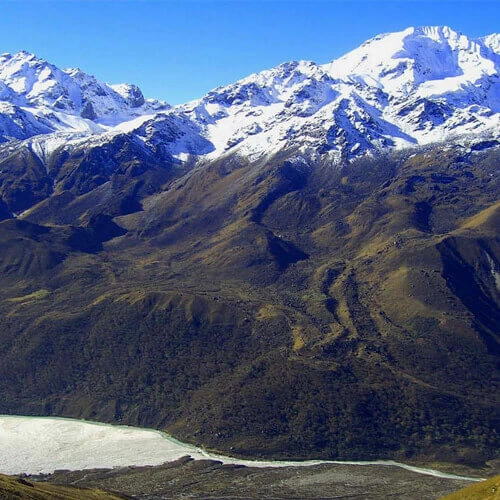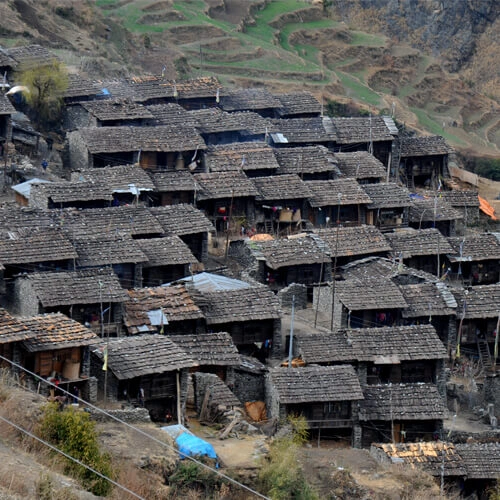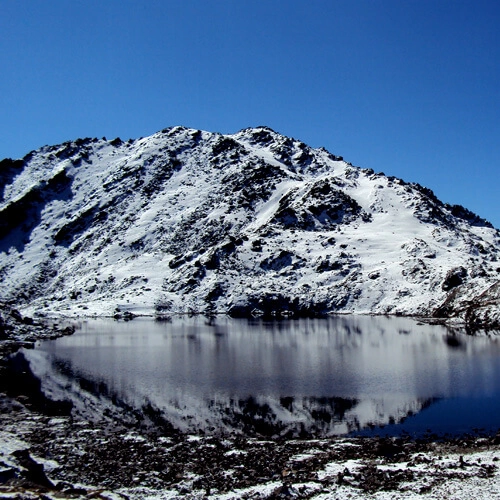About Langtang Valley Trek
The Langtang Valley Trek in Nepal is one of the most renowned hiking routes. This captivating Himalayan journey takes you into the heart of Langtang National Park, a northern haven nestled beyond the Kathmandu valley and bordering Tibet. The Langtang valley unfolds a breathtaking panorama of snow-covered peaks while traversing the diverse landscapes of the Langtang Himalayan Range.
Our 7 days Langtang trek is a perfect choice for those seeking a short and easy trek yet rewarding trekking experience in Nepal. It's tailored for those who relish the enthralling expanse of towering mountains and an exploration of diverse cultures. During the trip to Langtang, the sensation is infused with the vibrant tapestry of Tibetan-Buddhism-infused Tamang culture, providing a unique insight into their way of life. During this journey around the Langtang region, an ample opportunity arises to immerse oneself in the lush greenery and thriving fauna that graces the Langtang National Park.
Langtang Trek Before and After April 2015 Avalanche
Nestled beneath the majestic Mountain- Langtang Lirung, Langtang Village proudly holds a storied history as one of the region's oldest settlements. A catastrophe struck in April 2015 when earthquakes and avalanches destroyed not only this village but also other communities in the valley. At that time, the notion of the village's recovery seemed distant and improbable.
Remarkably, against all odds, the determination of the local inhabitants, reinforced by National and international support in the form of funds, inspiration, and encouragement, has breathed life back into Langtang Valley. A testament to human resilience, the town now stands restored, regaining the splendor that the avalanches had swept away.
Today, the village's renewed vitality is evident in the modern infrastructure, including newly constructed hotels and lodges that cater to visitors with enhanced services. The revival of Langtang Village serves as a heartwarming testament to the collective spirit and indomitable will of both its residents and the global community that rallied behind its restoration.
What to Expect on Langtang Valley Trek?
This 7 days Langtang trek begins with a scenic drive to Syabru Bensi, just a convenient 6-hour drive away from Kathmandu, ensuring excellent accessibility. Trekking across Nepal's diverse Himalayan ranges is a journey of unmatched adventure, surrounding ascents of steep mountains, passages through lush Rhododendron, Pine, and Bamboo forests, and traversing the rugged Tundra region – all of which are integral to the Langtang Valley Trek.
What sets the Langtang Valley Trek apart from other Himalayan journeys is the captivating fusion of Tibetan influence in the Tamang culture and their gracious hospitality. This region is a natural haven, graced with its wealth, including an array of wildlife such as the Himalayan Thar, Red Pandas, and Himalayan Black Bears. The trek also treats you to the awe-inspiring spectacle of snow-draped peaks, including Langtang Lirung (7234m/23,734 ft), Langtang Ri (7205m / 23,638 ft), and Dorje Lakpa (6,966m / 22,854 ft), among others.
Iconic landmarks like Langtang Village and Kyanjin Gompa pepper the trail, enhancing the allure of this unforgettable journey. The Langtang Valley Trek implies a holistic adventure, where nature's wonders are seamlessly woven into a textile of culture, wilderness, and breathtaking scenery.
